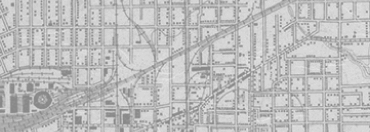


Back
Roland Zavada Oral History
Videotaped oral history interview with Roland Zavada. An engineer and executive with the Eastman Kodak Company, Zavada authenticated the Abraham Zapruder film and other photographic evidence for the Assassination Records Review Board in the 1990s. Since then he has continued to study the film and speak on the subject.Interview conducted at The Sixth Floor Museum at Dealey Plaza on November 15, 2010 by Associate Curator Stephen Fagin. The interview is one hour and one minute long.
Roland Zavada Oral History
11/15/2010
Born digital (.m2ts file)
61 Minutes
Oral History Collection/The Sixth Floor Museum at Dealey Plaza
2010.001.0132
Roland "Rollie" Zavada's assistance and expertise played a crucial role in the history of the Zapruder film. As head of the Kodak team which invented Kodachrome II film - the kind Zapruder used - Rollie was uniquely qualified to evaluate the film's identification and condition and to evaluate and explain the various physical and visual anomalies it contains. His detailed work confirms beyond any doubt that the 8mm film obtained by the U.S. Government from the Zapruder family is, in fact, the original Zapruder home movie film of the Kennedy assassination.Later, after The Sixth Floor Museum received the donation of the film's copyright and other film items from the Zapruder family, Rollie confirmed the identification of some of them. For example, when I noticed what appeared to be part of one of the "first day" copies of the film not already in government hands, Rollie confirmed the segment had come from that original copy. Then, after I noticed some 16mm black & white copies in the donation that showed intersprocket images from an apparently unslit 8mm film, Rollie confirmed that source. His finding proved that the original Zapruder film, contrary to the memories of some who handled it in Dallas, had not been slit, as was standard procedure after processing. In other words, the original film remained intact for an unknown period of time after leaving Dallas for LIFE magazine the next day. While there will likely always be questions about some aspects of the Zapruder film history, Rollie Zavada's expertise and helpfulness have proven extremely important to both the Museum and to the understanding of how and where the original film was handled. - Gary Mack, Curator
Roland Zavada Oral History
Videotaped oral history interview with Roland Zavada. An engineer and executive with the Eastman Kodak Company, Zavada authenticated the Abraham Zapruder film and other photographic evidence for the Assassination Records Review Board in the 1990s. Since then he has continued to study the film and speak on the subject.Interview conducted at The Sixth Floor Museum at Dealey Plaza on November 15, 2010 by Associate Curator Stephen Fagin. The interview is one hour and one minute long.
Roland Zavada Oral History
11/15/2010
Oral histories
Zapruder film
Photographs
Films
Zavada, Roland
Kodak
Assassination Records Review Board
Dallas
Authors, Filmmakers, and Researchers (OHC)
Abraham Zapruder Film (OHC)
Born digital (.m2ts file)
61 Minutes
Oral History Collection/The Sixth Floor Museum at Dealey Plaza
2010.001.0132
Roland "Rollie" Zavada's assistance and expertise played a crucial role in the history of the Zapruder film. As head of the Kodak team which invented Kodachrome II film - the kind Zapruder used - Rollie was uniquely qualified to evaluate the film's identification and condition and to evaluate and explain the various physical and visual anomalies it contains. His detailed work confirms beyond any doubt that the 8mm film obtained by the U.S. Government from the Zapruder family is, in fact, the original Zapruder home movie film of the Kennedy assassination.Later, after The Sixth Floor Museum received the donation of the film's copyright and other film items from the Zapruder family, Rollie confirmed the identification of some of them. For example, when I noticed what appeared to be part of one of the "first day" copies of the film not already in government hands, Rollie confirmed the segment had come from that original copy. Then, after I noticed some 16mm black & white copies in the donation that showed intersprocket images from an apparently unslit 8mm film, Rollie confirmed that source. His finding proved that the original Zapruder film, contrary to the memories of some who handled it in Dallas, had not been slit, as was standard procedure after processing. In other words, the original film remained intact for an unknown period of time after leaving Dallas for LIFE magazine the next day. While there will likely always be questions about some aspects of the Zapruder film history, Rollie Zavada's expertise and helpfulness have proven extremely important to both the Museum and to the understanding of how and where the original film was handled. - Gary Mack, Curator









